Sanpeijiru is a traditional Japanese soup enjoyed for generations. This hearty and flavorful dish typically features salted fish, daikon radish, and seaweed, and known for its ability to warm the soul. Making it particularly popular during the colder months. As we delve into the world of Sanpeijiru, we’ll discover the history, ingredients, and heartwarming traditions that surround this beloved Japanese comfort food.
What is Sanpeijiru?
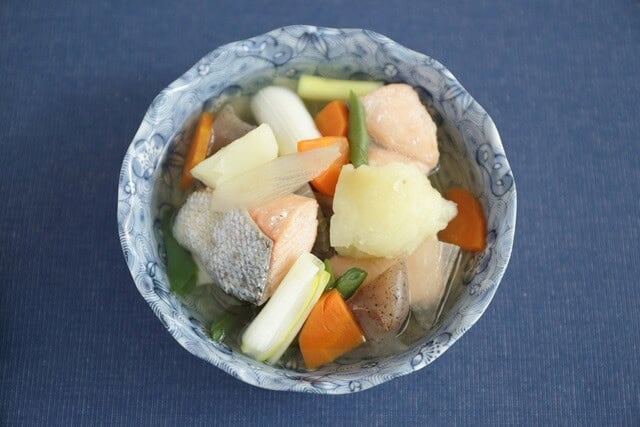
Sanpeijiru (三平汁) is a traditional Japanese soup or broth typically made with three main ingredients: salted salmon, daikon radish, and konbu seaweed. The dish is a simple and comforting soup commonly enjoyed in the colder months, particularly in northern regions of Japan where winters can be quite harsh. The combination of salted salmon, daikon radish, and konbu seaweed gives the soup a rich and savory flavor, and often served as a warming and nourishing meal, especially in rural and coastal areas.
Sanpeijiru History
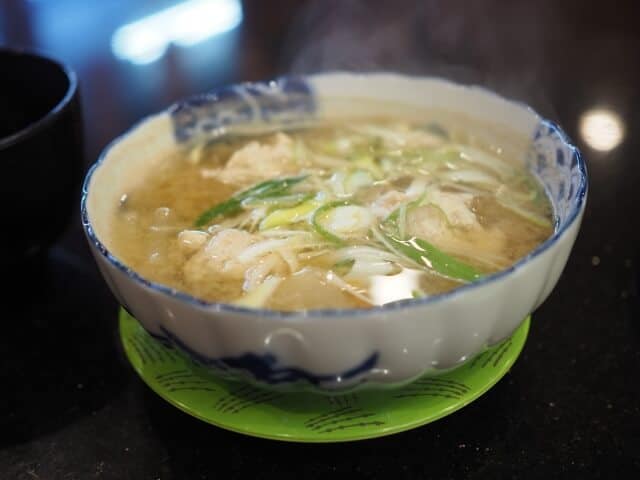
Sanpeijiru is a traditional dish from Hokkaido, a northern region of Japan. It’s been around for a long time, with records mentioning it dating back to 1784. People used to call it a “salty soup dish.” Back in the day, they used daikon radish for both their morning and evening meals. Takeshiro Matsuura, an explorer named Hokkaido, also wrote about something called “sanpei,” which used salty fish juice as seasoning.
The special thing about Sanpeijiru is that instead of using miso or soy sauce, they season it with salted fish. In old Hokkaido, miso and soy sauce were considered precious because they were brought from the mainland, so people relied on salt. Salt alone doesn’t have much flavor, but using salted fish adds a savory taste. They make Sanpeijiru by simmering it with long-lasting vegetables. In Ishikari, known for its salmon, they now make something called Ishikari hotpot with fresh salmon without salting it. Both Sanpeijiru and Ishikari Nabe are popular for using parts of the fish, like bones and heads, usually thrown away. This adds extra richness and flavor to the dish.
About Hokkaido
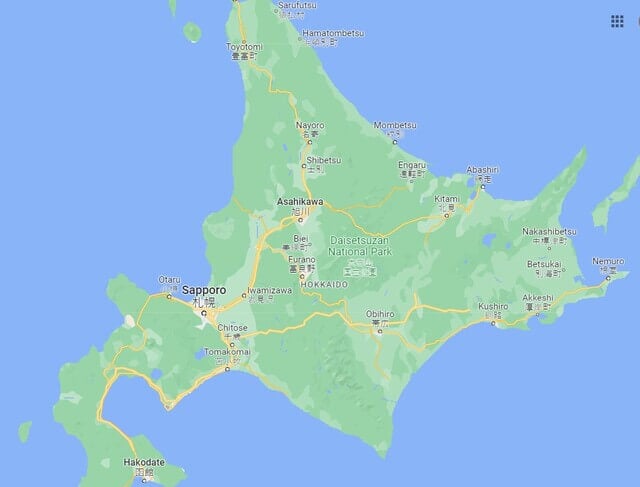
Hokkaido is surrounded by the sea on all sides, has a subarctic climate, has no rainy season, and has four distinct seasons with low humidity and temperature. Divided into four areas: along the Sea of Japan, along the Pacific Ocean, along the Sea of Okhotsk, and inland, and blessed with a rich natural environment. Agriculture, fishing, and dairy farming are flourishing, and the country ranks first in the production of many foodstuffs, with a food self-sufficiency rate of 200%.
Origin of the name Sanpeijiru
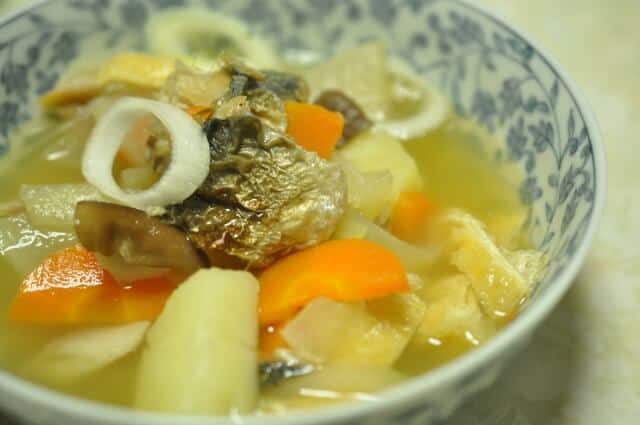
The name Sanpeijiru comes from three Japanese words: “san” for three, “pei” for salted salmon, and “jiru” for soup or broth. People have different ideas about how this name came about. One story says it might have been named after a fisherman named Sanpei Saito. Another tale suggests it got its name because they served it in a deep dish called a “Sanpei plate” made from Arita ware.
Other Salmon dishes from Japan
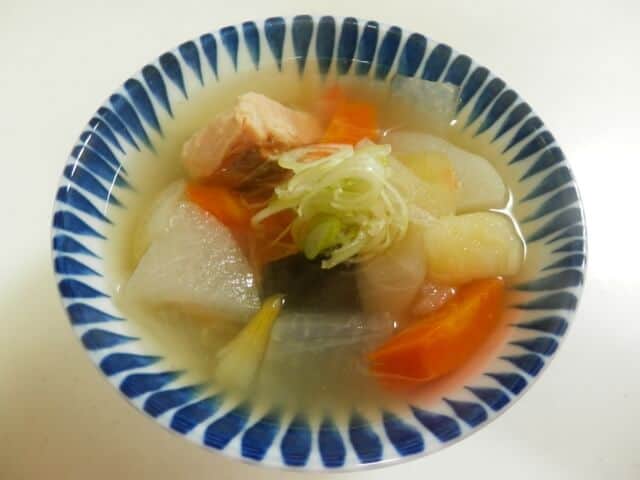
Salmon dishes are a culinary delight in Japan, with Ishikari Nabe from the Ishikari region being a standout choice. This hearty hot pot features salmon cooked with miso in a flavorful broth, often accompanied by a medley of vegetables. In 2007, along with Chanchanyaki, it is one of the “Top 100 Local Dishes of Rural Areas” by the Ministry of Agriculture, Forestry and Fisheries, and the “Ishikari Nabe Revival Project” was started in Ishikari City. Chanchan Yaki, another delectable option, involves grilling salmon with a sweet soy-based glaze, creating a savory and slightly caramelized flavor. They make the original Chan-chan-yaki by placing half a salmon in the center of a griddle and steam-grilling it, but at home you can also easily made it with fillets.
For a different twist, there’s Shake Don, a simple yet delicious dish consisting of salmon sashimi or grilled salmon served over a bowl of rice, showcasing the purity and taste of fresh salmon in its raw or cooked form.
How to eat Sanpeijru?
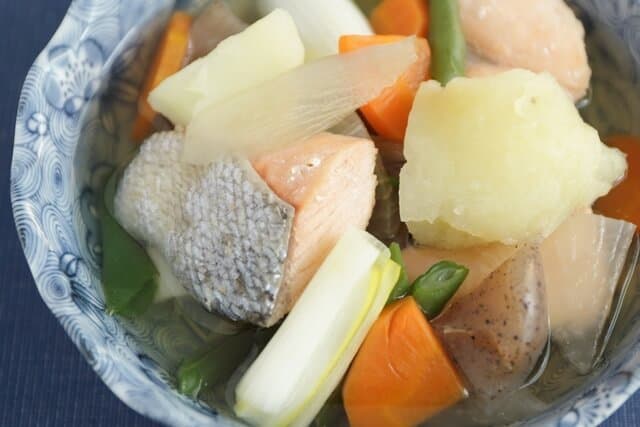
To enjoy Sanpeijiru, you start by making a tasty soup using kelp. Next, you take fish like salmon, cod, or herring, salted or soaked in rice bran, and you boil them along with vegetables like carrots, daikon radish, green onions, and potatoes. Often, folks use fish heads and bones to make the flavor even richer. The ingredients can change depending on who’s cooking, and you can add seasonings like miso, soy sauce, and sake lees for extra flavor.
Sanpeijiru FAQ
- What are the best side dishes to serve with Sanpeijiru?
You can serve traditional side dishes that complement its flavors and add variety to the meal. Some popular options include steamed white rice for balance, Japanese pickles like takuan or cucumber for crunch, vinegared salads such as sunomono for a zesty touch, sweet tamago (Japanese omelet) for a protein balance, blanched veggies in sesame sauce (goma-ae) for nutrition, and another type of miso soup to diversify the meal.
- Is it common to eat Sanpeijiru year-round or mostly during specific seasons?
Sanpeijiru is a traditional Japanese dish more commonly associated with specific seasons, particularly the colder months. Often enjoyed during the fall and winter when the weather is chilly. The warming and hearty nature of Sanpeijiru makes it a comforting and nourishing meal during the colder seasons, helping to ward off the cold.
Sanpeijiru Recipe
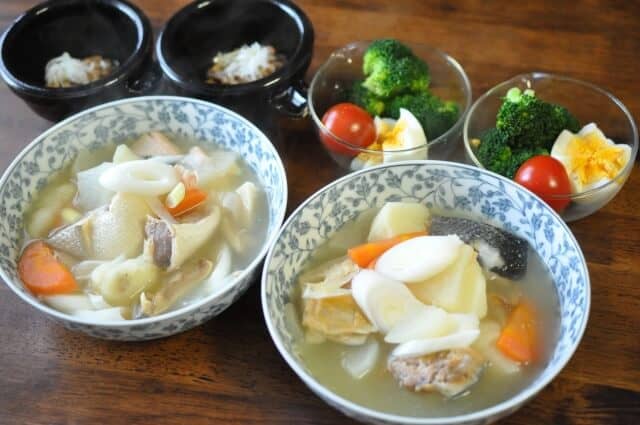
Sanpeijiru Ingredients
| Ingredients of Sanpeijiru for 4 persons | Measurements |
|---|---|
| Salmon ribs | 250g |
| Potato | 160g |
| Japanese white radish | 80g |
| Carrot | 30g |
| Green beans | 30g |
| Green onion | 30g |
| Burdock | 30g |
| Konnyaku | 60g |
| Kelp soup stock | 300g |
| Sweet sake | 7g |
| Salt | 1g |
| Seven spice blend | 1g |
| Liquor | 7g |
How to make Sanpeijiru?
Brush the salmon with salt and cut into pieces of about 3cm.
Cut the potatoes into chunks, cut the daikon radish and carrot into small pieces, cut the burdock root into cubes, and tear the konnyaku into bite-sized pieces.
Add the konbu stock, vegetables, and konjac to a pot and simmer until soft. Then, add the salmon and simmer for a bit. Season with mirin and salt. Add green onions cut into 2cm pieces.
Arrange on a sanpei plate and add shichimi chili pepper.
Where to buy Sanpeijiru?
Nemuro Hanamaru (根室花まる 根室本店)
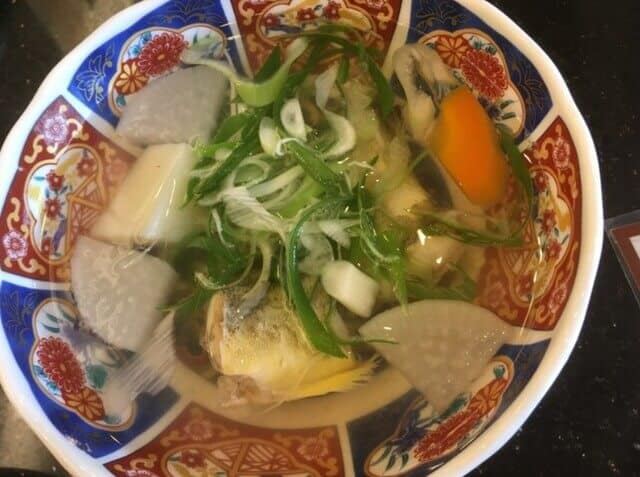
“Nemuro Hanamaru Nemuro Main Store” is a popular conveyor belt sushi restaurant with branches in Sapporo and Hakodate in Hokkaido. The restaurant serves Sanpei soup, a local dish. Sanpeijiru is a soup with a dashi stock made mainly from kelp and seafood cooked with vegetables. It uses salted fish and is perfect as a soup to drink between sushi meals.
Restaurant Mikaku (星野リゾート トマム)
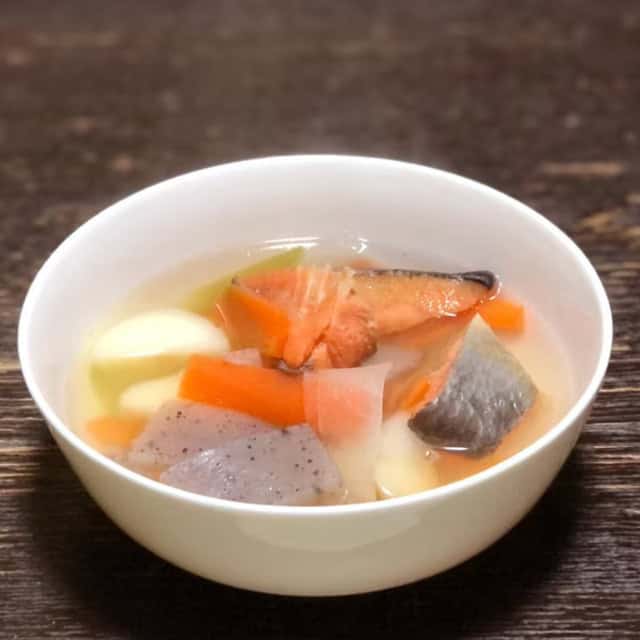
Ochazuke is a signature dish at Mikaku. They age the salmon for three days and grill it, skin on, to maximize its flavor. While this dish is universally served throughout Japan, there are some similarities with a local Hokkaido dish called sanpeijiru. While not exactly like Ochazuke, the unami from Kombu, as well as the cooked salmon in the soup, do overlap.
Final Thoughts
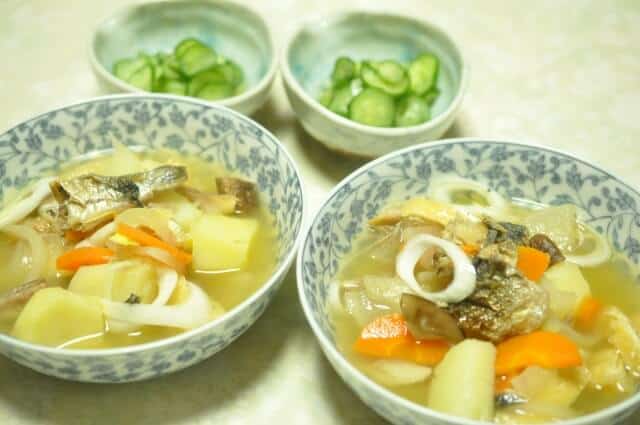
Sanpeijiru is a comforting and flavorful Japanese dish with a rich history, often enjoyed during the colder seasons for its warming qualities. While it’s traditionally served with side dishes to create a well-rounded meal, modern variations and personal preferences have made it a year-round favorite. By learning about the origins, preparation, and possible accompaniments of Sanpeijiru, we can appreciate its cultural significance and adapt it to our own tastes, making it a delicious and wholesome addition to our culinary knowledge.
You can check some Japanese soup dishes that we know you would like to try too.
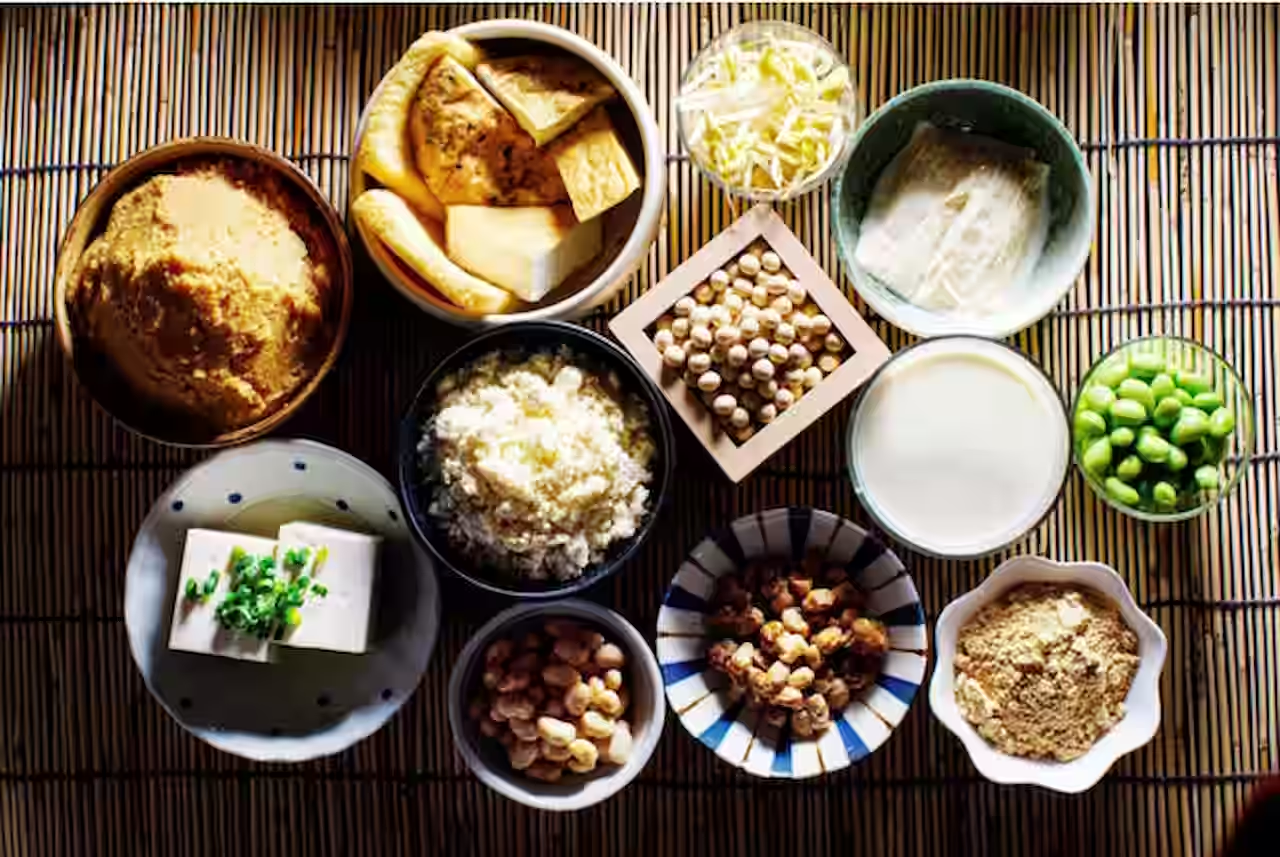





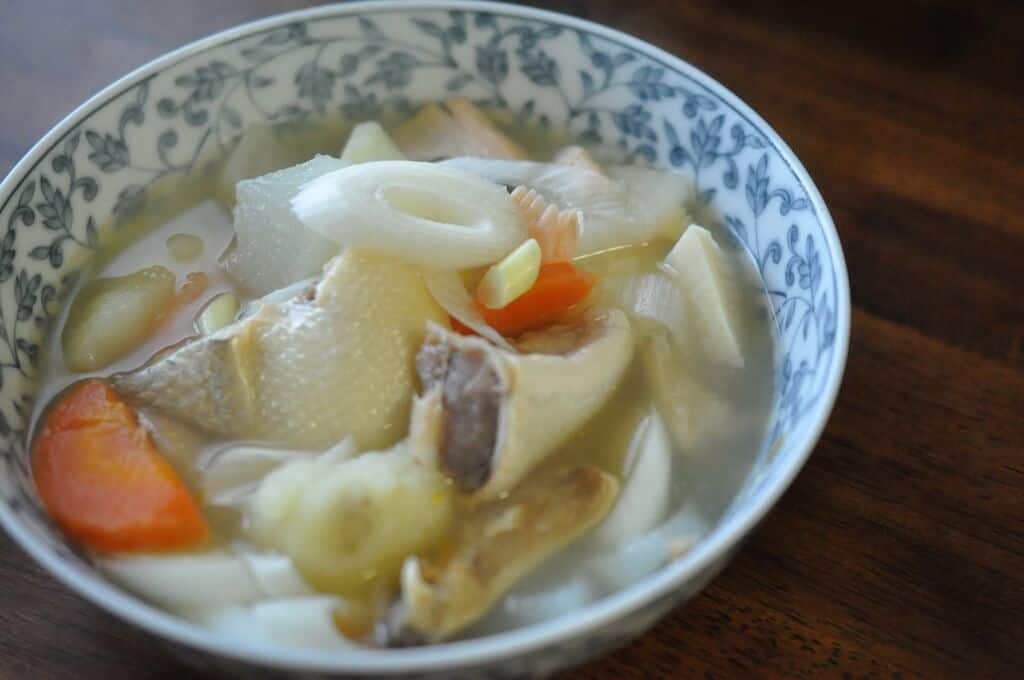
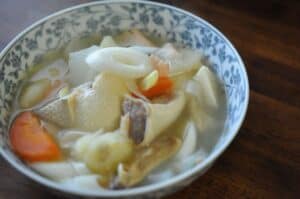
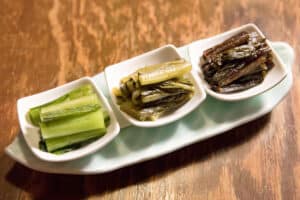

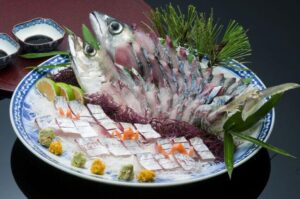
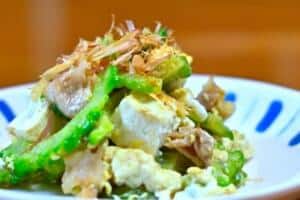
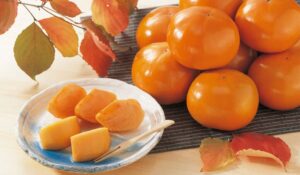
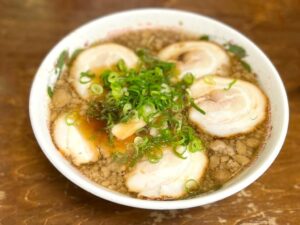
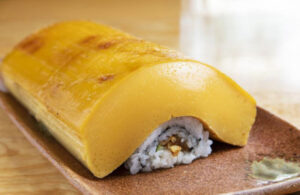
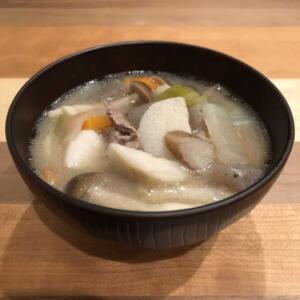
Comments